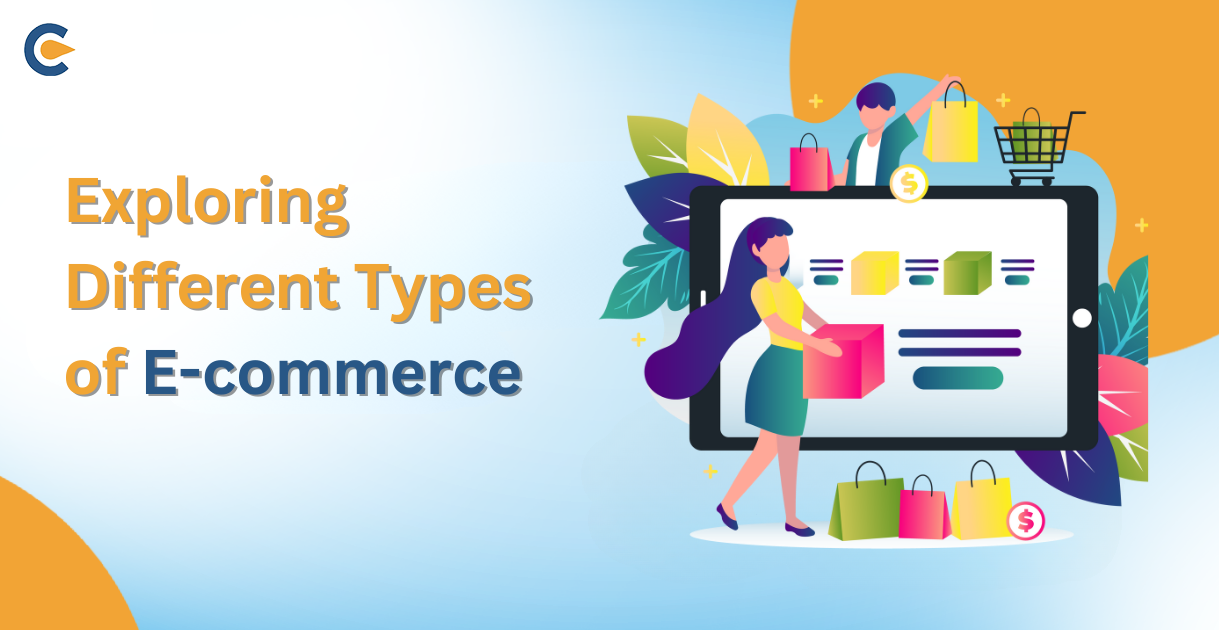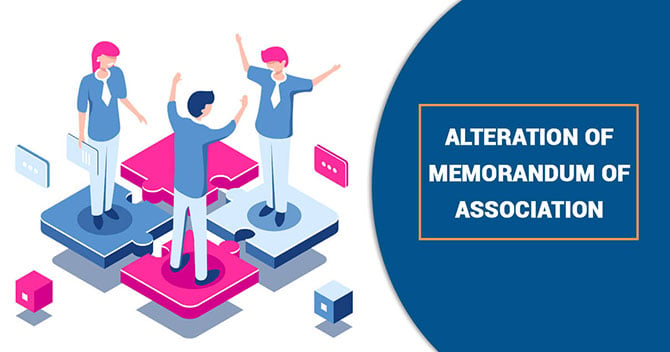In the growing world, e-commerce or electronic commerce refers to trading goods and services on the Internet. E-commerce facilitates the free flow of trading of goods with electronic means, basically the Internet. This article will discuss your views about the types of e-commerce businesses and different e-commerce business revenue models.
Meaning of E-commerce in Brief
Before moving to types of e-commerce businesses and e-commerce business revenue models, let’s begin with the meaning first.
E-commerce refers to the purchasing and selling of goods and services over the Internet. The Indian e-commerce is projected to rise 5 times to USD 300 billion by 2030. The remarkable surge in growth is on the cards for the segment. It empowers sellers with the flexibility to sell a wide range of products using electronic mediums.
6 Major Types of E-commerce
The following listed below are the types of E-commerce segregation:
- Business-to-Business (B2B)
- Business-to-Consumers (B2C)
- Consumer-to-Consumer(C2C)
- Consumer-to-Business (C2B)
- Business-to-administration(B2A)
- Consumer-to-Administration (C2A)
Let’s learn about them individually-
What is the Business-to-Business Model? (B2B)
B2B stands for business-to-business model and is a medium that is used for the exchange of businesses. Meanwhile, e-consumer business-to-business transactions are conducted between two companies, one as a wholesaler and the other as an online retailer. However, through B2B transactions, many organizations have gained several benefits due to the various advantages of negotiating powers.
What is Business-to-Consumers? (B2C)
B2C or business-to-consumer is a type of business model that comprises sales between online businesses and consumers. In other words, B2C is also called retail e-commerce. One of the major examples of the Business-to-Consumer is Amazon, which works entirely on the Internet, giving sellers and buyers the comfort of making a transaction from every corner of the globe.
What is Customer-to-Customer? (C2C)
C2C refers to the Customer-to-customer business model, where individual consumers take part in transacting goods and services directly from the individual consumers. For example, these types of E-commerce are Vinted, Craigslist, eBay, etc.
What is Consumer-to-Business? (C2B)
C2B is Consumer-to-Business, which refers to the business model that delivers consumer value to a business. However, the reach of C2B has gained popular attention through consumers in generating media and content across segments like blogs, websites, and podcasts in the process of business. Consider the example where a photographer sells their photos to companies for their use of ads or social media campaigns.
What is Business-to-Administration? (B2A)
B2A or Business-to-Administration views for a business model that conducts transactions with government agencies, which refers to selling online tools to government agencies. This provides tforms to bid on government opportunities like tender, auction, etc.
Check Also, Business Plan To Start A Retail Ecommerce Business
What is Consumer-to-Administration? (C2A)
Consumers-to-administration or C2A is a business model entirely for the consumers who seek its requesting information concerning public model conducted between individuals and public administration.
What are the Benefits of E-commerce for Businesses?
If you’ve not given your nod to e-commerce platforms, you must go through the below-mentioned merits that will drive you towards embracing the concept of e-commerce. The benefits of e-commerce are-
- Facilitates Faster & Automated Transactions
Are you tired of standing in long queues at different stores to get the products of your choice? Well, the solution to this problem lies in the emergence of e-commerce. For business ventures, e-commerce facilitates faster and more automated transactions. Ordering products by sitting at your comfort is a charm, isn’t it? E-commerce has simplified lives across geographical borders.
- Business is Awake 24/7
E-commerce businesses work 24/7, and there are no geographical barriers hindering the workflow. Your business can run even when you are sleeping. That’s one of the significant benefits of e-commerce for businesses.
- Wide Customer Coverage
Due to the progress of the e-commerce segment, businesses can reach customers residing in different parts of the world. They can experience using your products and services from wherever they want.
- Management of Multiple Purchases
E-commerce has revolutionized the process of purchase management as businesses can manage multiple purchases simultaneously with minimum or negligible scope for errors.
- One-stop Place for Customer Feedback
You can easily get the customer feedback online. It will help you improve your product and service and, eventually, contribute to the growth and success of your business.
- Data Analytics in Real Time
By leveraging the power of data analytics in real-time, e-commerce websites can analyze and capture a substantial volume of information and acquire data-driven insights into business processes and customers.
What are the Types of E-commerce Business Revenue Models?
Revenue models are an outline of how the company is going to produce its income from the services or products. It’s the procedure by which the business makes money, keeping in mind several components within a revenue model; here are the important ones listed.
- Dropshipping— Dropshipping is a personal delivery service that solves the difficulty of stocking, packaging, and shipping. Moreover, it allows online stores to sell products without the seller physically owning them.
- Wholesaling and Warehousing – Warehousing and wholesaling comprise providing physical space for the storage of products and goods. It simplifies the delivery process by allowing wholesalers to supply items to various channels, stores, and vendors as needed.
- Private Labeling and Manufacturing- These types of e-commerce business revenue models refer to a private label for a product manufactured by a company and sold by another company’s brand name. This way, private label lines can offer exclusive products, expand their catalogs, and undercut competitor pricing.
- White Labeling—This business revenue model involves branding a product under the name of your own company. Eventually, your company will act as a reseller of the other company’s product.
- Subscription- According to the subscription revenue model, the customer pays a regular fee to obtain the product on a regular basis. It works more effectively than e-commerce businesses selling consumable articles that are in regular need. For example, beauty products, food, or pet foods.
The Final Words
In the space of entrepreneurship, e-commerce has grabbed the eyeball in the last few decades. Several young business enthusiasts are proceeding with company registration and starting their e-commerce business, considering its potential and craze among the masses. You might have found the voice of your heart and which type of e-commerce business model it relates to the most.
FAQs- Frequently Asked Questions
1- What are the 4 popular types of E-commerce?
Some of the popular e-commerce types are mentioned below-
- Business-to-Business(B2B)
- Business-to-Consumers (B2C)
- Consumer-to-Consumer(C2C)
- Consumer-to-Business (C2B)
2- What is the most common type of e-commerce?
Business-to-Consumer (B2C) – This type of e-commerce is the most established, and it’s the one that most people prefer to engage in. It occurs when businesses set up digital storefronts and online shops to directly sell their products or services to consumers.
3- What is the 5c model of e-commerce?
‘Company’, ‘Collaboration’, ‘Customers’, ‘Competitors’, and ‘Context’ all these 5 Cs comprise the first step to learning what each symbol stands for and how it can benefit the company’s marketing efforts.
4- What is the full form of e-commerce?
E-commerce stands for Electronic Commerce. It is the exchange of goods and services and the transmission of funds and data over the Internet. E-commerce relies on technology and digital platform.
5- What are the three basic components of the e-commerce model?
The three main parts of basic components of the e-commerce model are, sourcing a product, storage and warehousing, and fulfilment and shipping. All 4 of them go about depending on the type of e-commerce business you want to run.
6- Which type of E-commerce revenue model is best?
Dropshipping is the best type of revenue business model; one of the fastest-growing methods of e-commerce is dropshipping.
7- Who is the father of E-commerce?
Michael Aldrich, a British entrepreneur, is commonly regarded as the father of e-commerce. Born on August 22, 1941, Aldrich had a keen interest in the impact on the estimation of online retail.
Important Reading – The Legal Issues Faced by the E-Commerce Businesses











